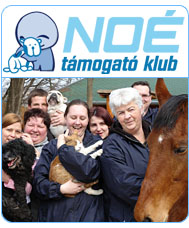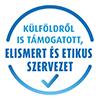Equine vet’s visit, part II – Carmen
2011.06.28.
This Thursday we could get round to both the X-ray that was due some time ago and the first shockwave therapy.
Unlike us, Carmen did very fine on the X-ray. We almost melted during the procedure in our white coats, which felt really heavy.
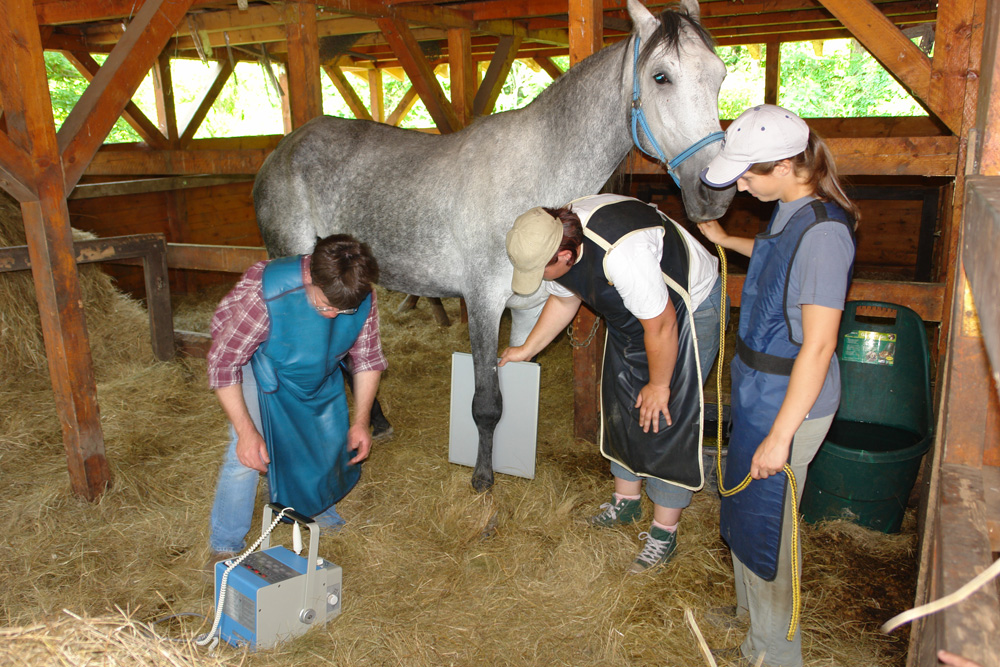
Our veterinarian wrote:
Carmen got wounded on 1 February 2011. The first set of radiographs was taken (titled as febr1 and febr2) that day.
There are several bones in the upper and lower row of carpal bones in a horse’s tarsus, of which Carmen’s fourth carpal bone (os carpale quartum) got her leg broken.
On the image named ’febr1’ the broken piece of bone (marked with an arrow), which is not at its proper place, is visible. On the image named ’febr2’ (which is a shot from a different angle) the bone looks like as if it did not move from its place, although a change in its structure is apparent.
Due to the severity of the deformity, no other method was suggested as a surgical procedure other than creating a stiff joint. Thus, the owner opted for a conservative treatment (using a multi-layered Robert-Jones bandage along with metal implants).
The degenerative joint disease that is visible on the radiographies made in June is still accompanied by pain. Once the intensive bone formation is completed and the joints are stabilized to a certain extent (although it is not visible on the radiographies that the carpal cartilage is utterly damaged, we can deduce that from the bony deformities), Carmen’s pains will decrease. The aforementioned shockwave therapy is aimed to facilitate this process.
febr1:
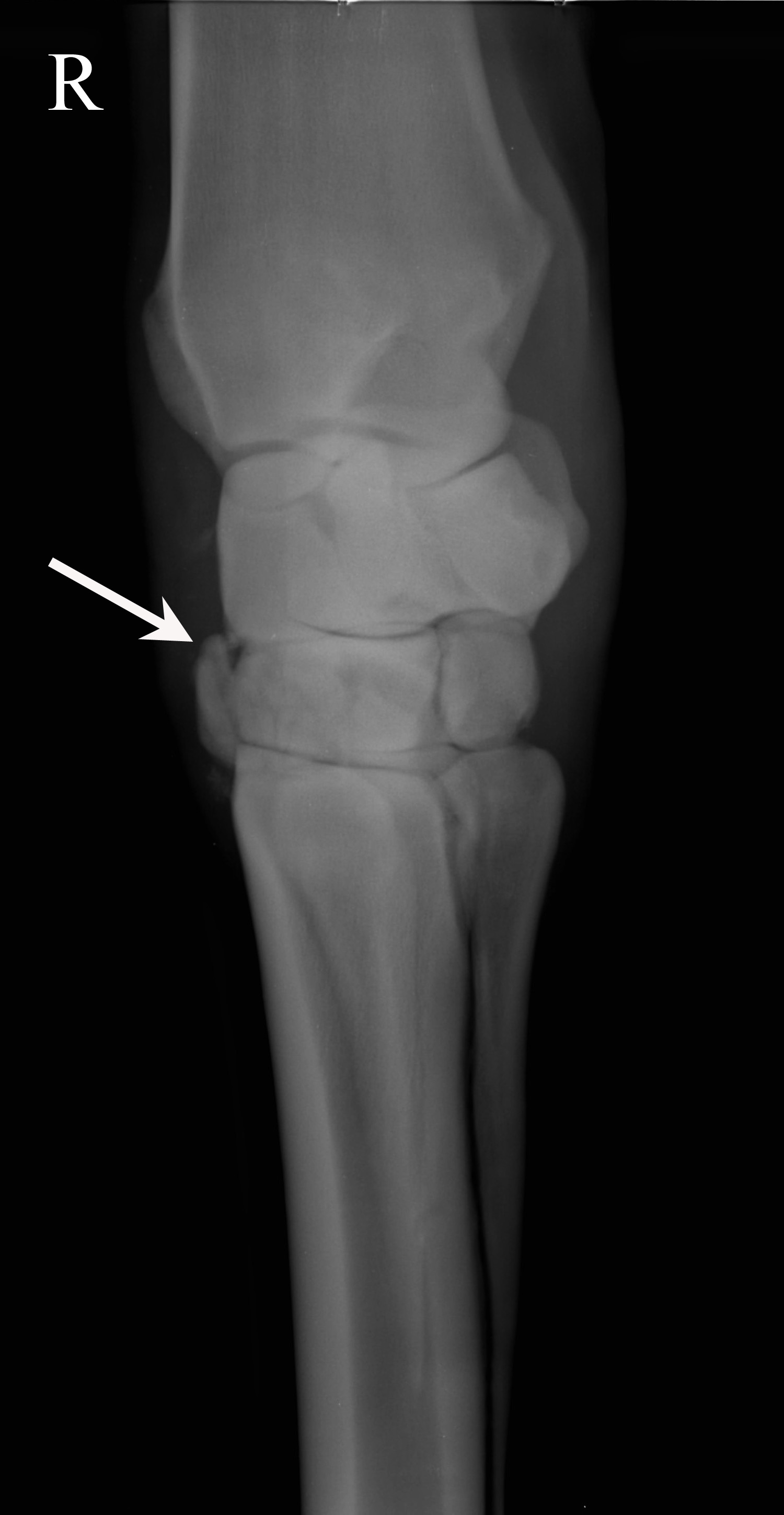
febr2:
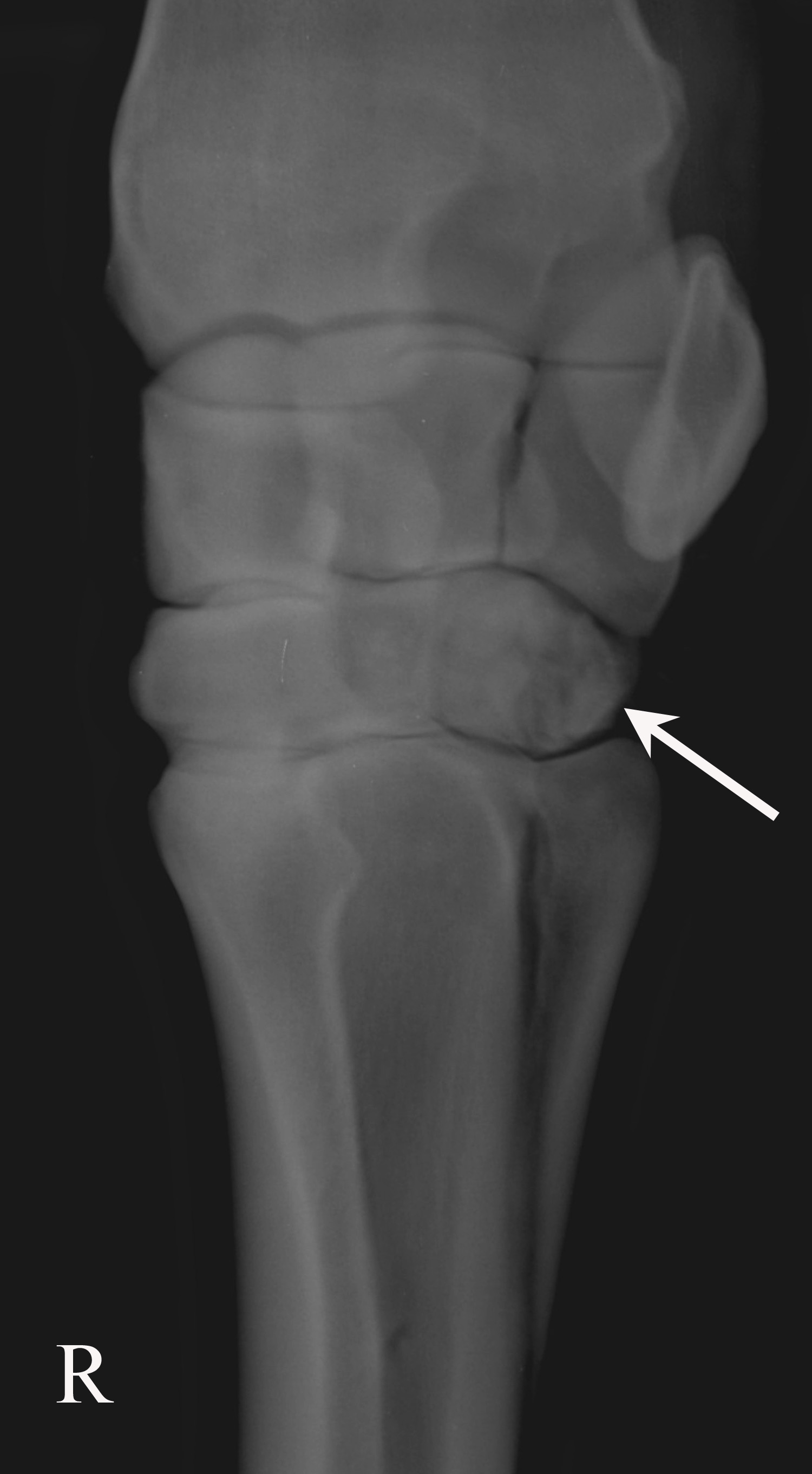
Recent radiographies:
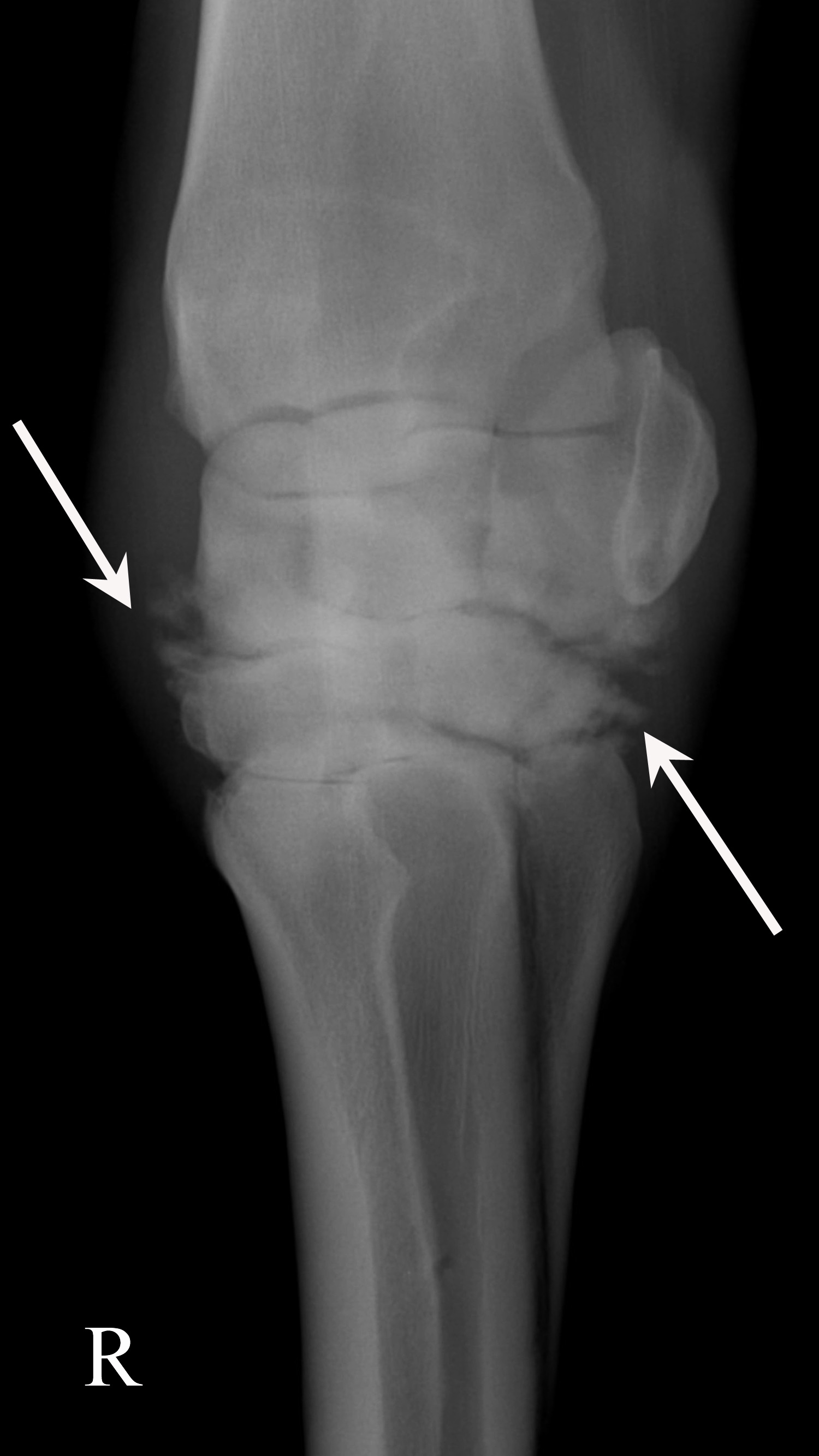
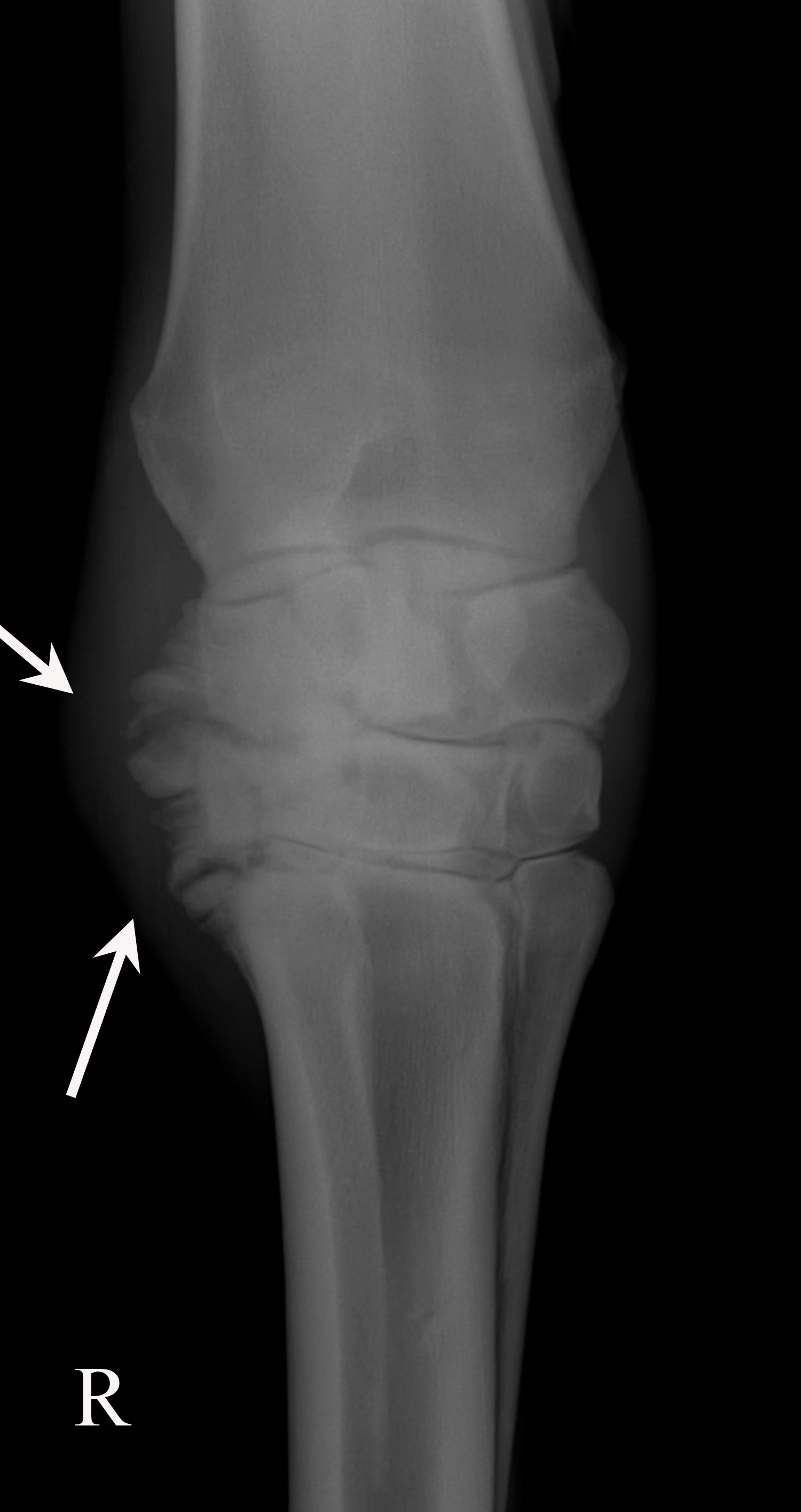
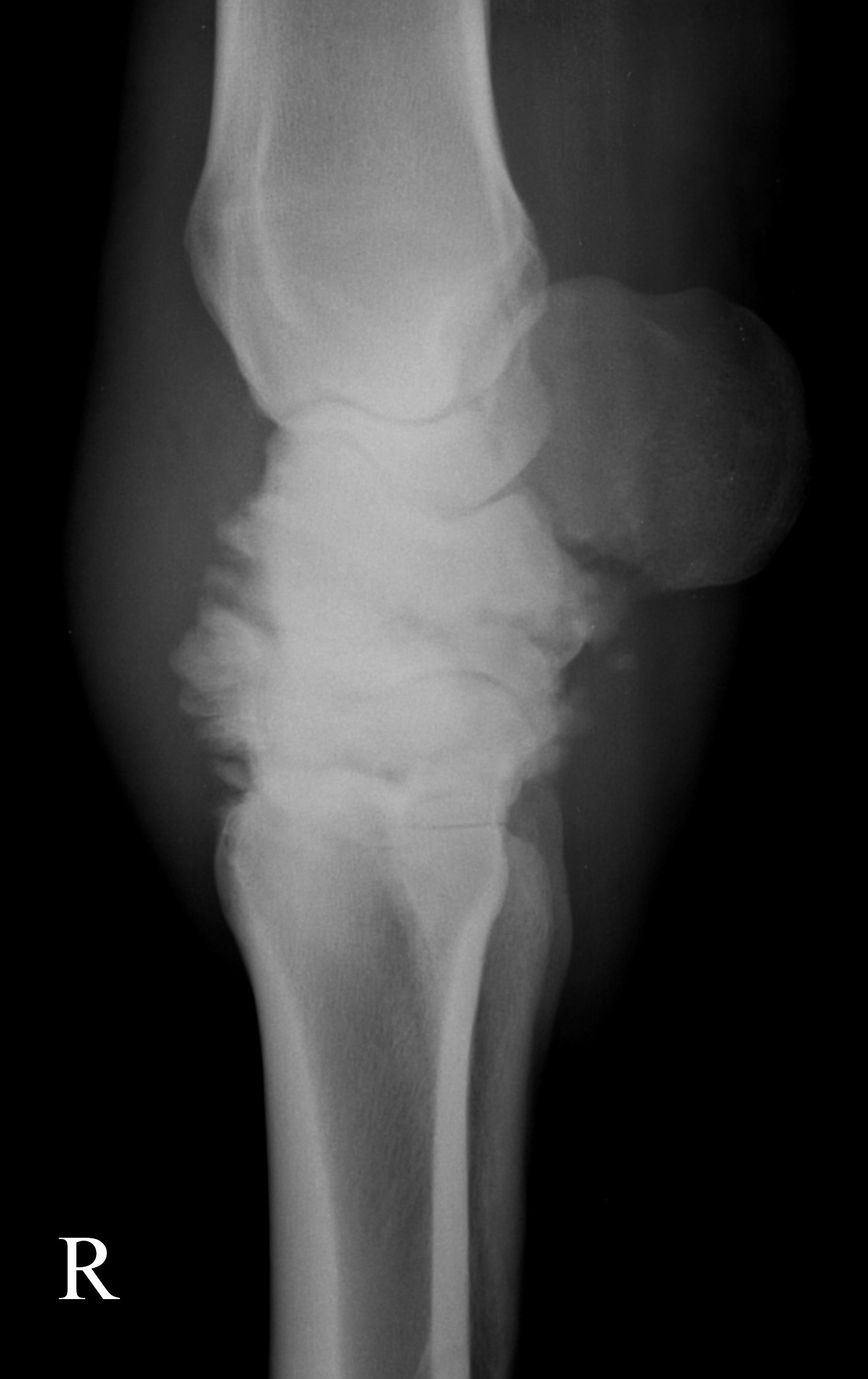
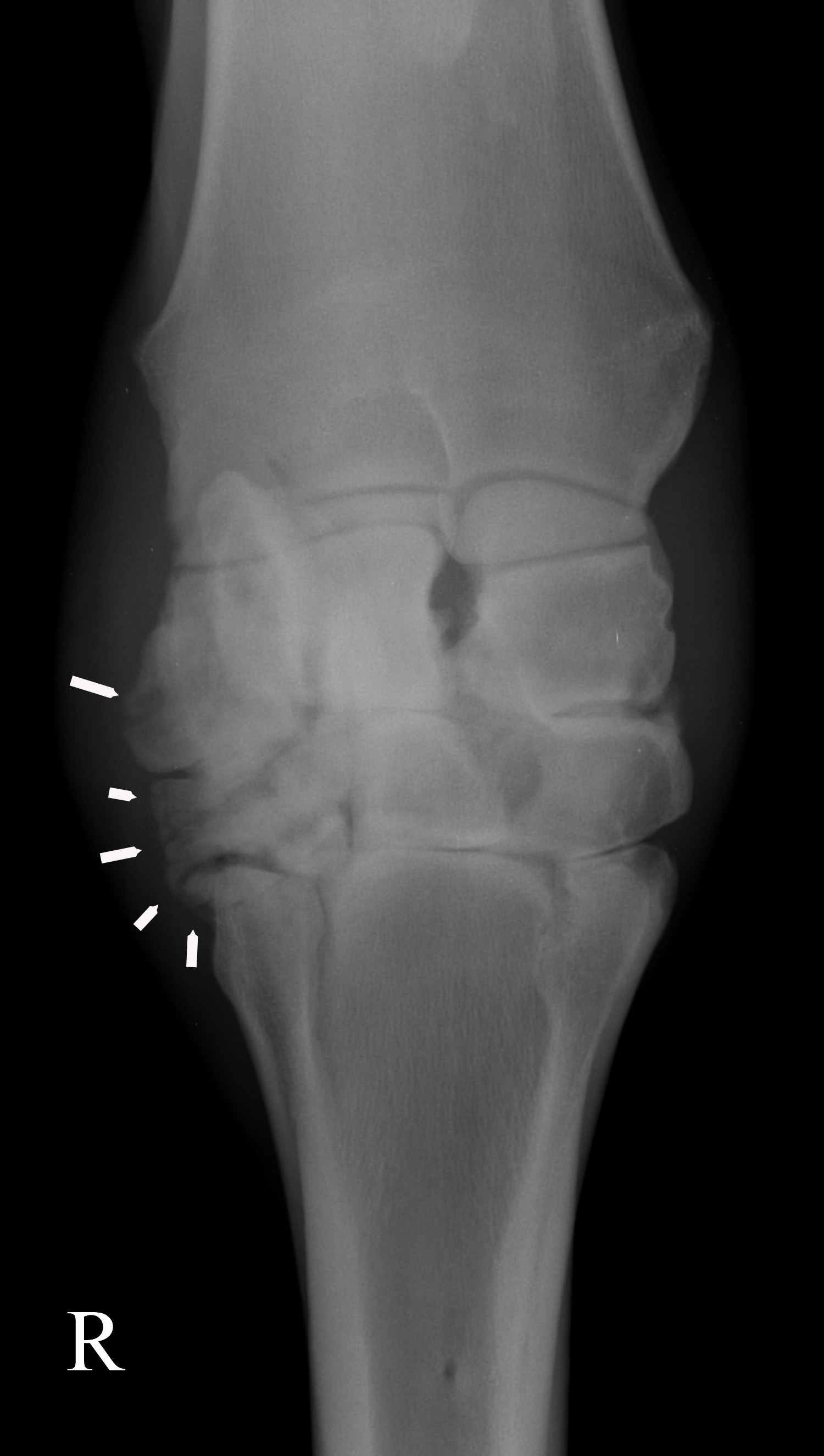
The X-ray was followed by the treatment itself. At this time Carmen nearly jumped out of her skin even at hearing the machine get turned on (which almost has the same sound as a jackhammer, only that the former is more quiet). We were obliged to sedate her so that she could withstand the treatment that took three times five minutes.
The more valiant ones, Meggyes and Niki even had the opportunity to try out the treatment with the machine on Carmen (under the supervision of our vet), since it is very tiresome to hold such a ’pistol’ firmly for five whole minutes.
Our veterinarian wrote:
About the shockwave therapy
The shockwave therapy was created decades ago in order to treat (’explode’) renal calculi.
Since then, this method has been developed to be able to treat orthopaedic deformities by determining more accurately the energy intake and decreasing it.
The shockwaves themselves are fast-propagating acoustic waves that can be directed to the desired painful areas by a special head on the therapy machine.
These acoustic waves, rich in energy, increase the metabolism and blood circulation as well as serve as an excellent painkiller.
However, its effect mechanism is not entirely known yet. This may be one of the reasons why its usage is not yet widespread among scientific studies.
Horses are most commonly treated for articular injuries with this method. (Since articular injuries tend to heal slower than usual in horses due to their poor blood circulation, it is not uncommon for them to have a relapse. According to German studies, shockwave therapy reduces significantly the chances of further articular injuries.) It is also useful for alleviating pain, which makes it an ideal treatment for arthroses (like in case of Carmen).
On Friday Carmen had some pain in her leg and moved in a rather jumping fashion. Despite the fact that we knew that we had to be patient, we were a little worried for her.
On Saturday we were thrilled to see that Carmen not only managed to stand on her leg, but was walking around the stables like someone who had no pain whatsoever. According to dr. Zoltán Kerekes, her leg has never been in a better condition since it was broken!
On Sunday he was jumping around in the stables constantly as if she was at a rodeo. Fortunately, she managed to do it with only her three healthy legs. It was sure that she was in a terrific mood and was not at all in pain.
Nevertheless, it would not be wise to count our proverbial chickens before they are hatched, since her condition may still change in both directions. However, faith is always welcome and Carmen needs it so that her condition can stabilize.
One week later Carmen’s second shockwave therapy took place. The next day her leg started to hurt and continued doing so for another day. The following day she was fine.
Our last session will be held together with Carmen’s first hoof trimming in our animal shelter to prevent having to sedate her twice. It is unlikely that she would tolerate the hoof trimming well, since she will have to bend her aching leg, and it will prevent our farrier from using the usual trimming procedure. That it is why it is of vital importance that an expert specialized in therapeutic hoof trimming is seeing us regularly.
To be continued…
A Tetszik gomb eléréséhez sütik engedélyezése szükséges.
 Share
Share





 Magyar
Magyar
 Deutsch
Deutsch











